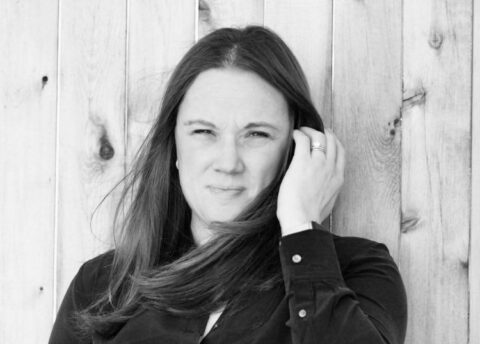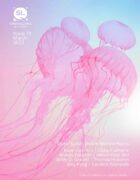Kate Chopin is one of my favorite authors. How did Chopin factor into what you wrote here? Did you find inspiration in your own life?
I love Kate Chopin for bucking conventions of being a woman and a mother, expressing through The Awakening in particular the very real feelings of despair that can come with social strictures on women. My narrator is trying to navigate the feeling of walls closing in. Will she succeed or end up like Edna Pontellier?
The line “motherhood is a form of self-erasure” is mine, from a long-abandoned piece of creative nonfiction. I had an MFA advisor write that comment in the margin, but we spoke and ended our relationship on a positive note. While I wrote it before I became a mother, it still holds true. I love my boys, but so much of the “self” I was before I had them is gone, at least while they are still so young.
The cost of childcare for two kids where I live is higher than what my monthly salary would be as a high school teacher (my profession). The concept of paternity leave is completely foreign to my husband’s boss. There’s an unrelenting pressure to breastfeed. The “self” women have before motherhood is often erased as her life is consumed by childcare—there’s no time for anything else. I think of Chimamanda Ngozi Adichie’s TED Talk, “The Danger of the Single Story”—the idea there’s a single story, a lie that our country and public policy tells us about motherhood. The narrator knows it’s a lie; that’s what she has in common with Chopin writing in 1899. Many women writers like Rachel Cusk, Annie Ernaux, Elena Ferrante, Rachel Yoder, Jessamine Chen, and Claire Vaye Watkins were in my head as I wrote.
This story is grounded in my own experience—not the affair!—but the churn of complicated feelings in the early days of both my pregnancies, especially my first. My goal was to leverage and manifest these feelings into a character.
The extended shell metaphor works so well. Is the title another “shell,” further defining how women approach reproduction and body autonomy?
My intention was to emphasize a woman as a shell, pried open in physical and psychological ways as they become a mother. I wrote this postpartum with my first son and edited while pregnant with my second. The ideas were present in my own lived experience as I came to terms with my body’s transformation and birth’s aftermath.
I revised again after the Supreme Court decision overturning Roe vs. Wade. My own struggle with how I saw and allowed my body to be used, played out in the public sphere. Living in Massachusetts, I had choices about whether or not to continue with my pregnancy and to decide which way the baby came out of my body. I wanted this narrator’s fictional ending to be bleak—neither an abortion or a birth is going to be a great experience for a narrator ambivalent about pregnancy/parenthood—but she has an “either way,” a choice many women no longer have.
The use of metaphor in exploring the theme was intentional, but I also wanted the narrator to be relatable and for there to be a grounding in both her practical concerns and her unconventional actions.
Your use of time and limited details without dialogue, only narration and an unnamed narrator feels intentional. How did you decide what to share and how to structure the flash?
The structure and concept started in a Kathy Fish generative workshop with a prompt to use repetition and became a way to excavate feelings of early pregnancy—the urge to flee responsibility, panic and frustration when you realize your body is no longer your own, anger at motherhood expectations. For some women it’s a joyful time, but it isn’t for this narrator, so she looks to escape the moment; by looking backward to her college days and also ahead to the future.
The narrator is very conflicted about having a child. We never know if the pregnancy is planned or not—but I don’t think it’s necessarily important. I wanted to amplify that even a planned pregnancy can feel like a shock, regardless of a woman’s situation. The narrator is unnamed on purpose. I wanted her to feel universal and embody that sense of erasure, of becoming not her individual self, but just another pregnant woman.
What is the significance of the last line?
The last line is meant to convey a stark reality—the narrator’s impossible choice and that the bodily experiences of childbirth or abortion may be unpleasant. I wanted to emphasize the idea of the pregnancy as an intrusion that either manifests as a radical change in the narrator’s life (parenthood) or a consuming problem to solve (abortion)—in both cases, a prying open. In my experience, a child is a wonderful and joyful thing, but an embryo is not a child and a fetus is not a child. Even in the best situations, there can be a sense of horror at something growing in your body, a something that you haven’t fully conceptualized as a baby yet. This is where the narrator is. Maybe it will change for her when she hears a heartbeat or sees an ultrasound photo, or maybe not until her baby smiles for the first time. Maybe it will never change. Maybe she’ll abort. I wanted the reader to sit with those complicated feelings.
These interviews often include an oddball question. Can you shuck oysters?
I love oysters but am terrible at shucking them. My husband shucks and I slurp them down, preferably raw with a dash of cocktail sauce. My favorite are local oysters from Duxbury or Wellfleet, Massachusetts.
What are you working on?
I’m finishing a short story collection about desperate expats that’s evolved out of my MFA thesis. I’m also working on a novel exploring some of the same themes as this story. Find me on Twitter at @KathrynHurlbut.



 The core workshop of SmokeLong Fitness is all in writing, so you can take part from anywhere at anytime. We are excited about creating a supportive, consistent and structured environment for flash writers to work on their craft in a community. We are thrilled and proud to say that our workshop participants have won, placed, or been listed in every major flash competition. Community works.
The core workshop of SmokeLong Fitness is all in writing, so you can take part from anywhere at anytime. We are excited about creating a supportive, consistent and structured environment for flash writers to work on their craft in a community. We are thrilled and proud to say that our workshop participants have won, placed, or been listed in every major flash competition. Community works.